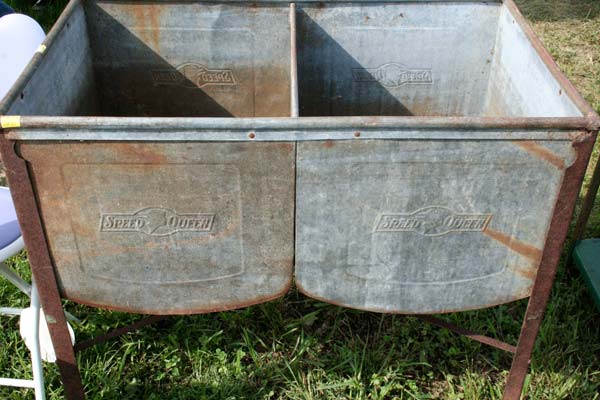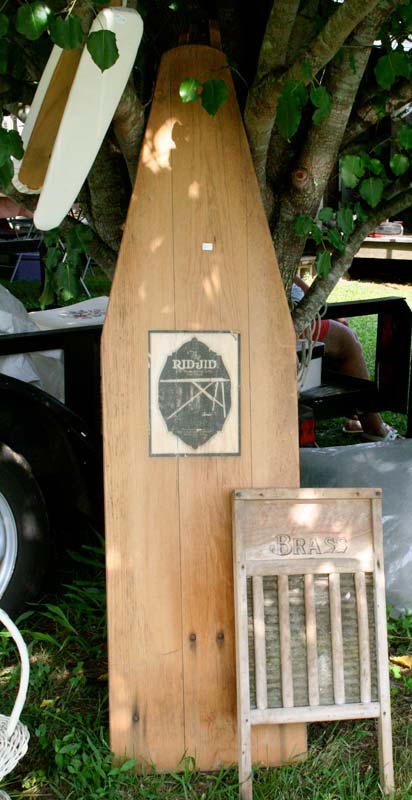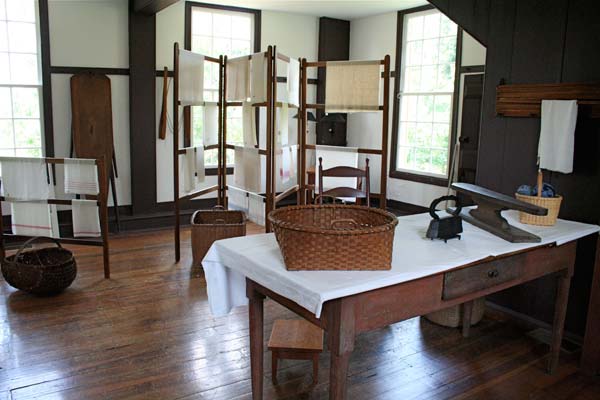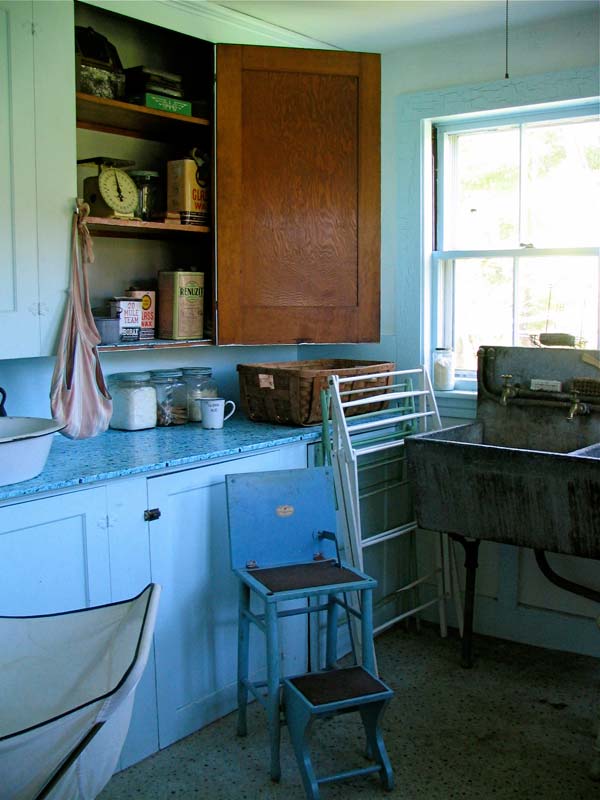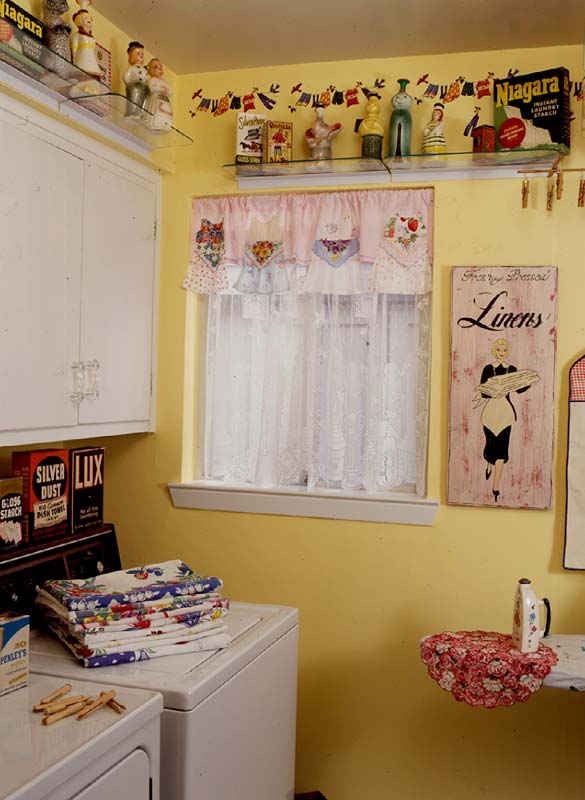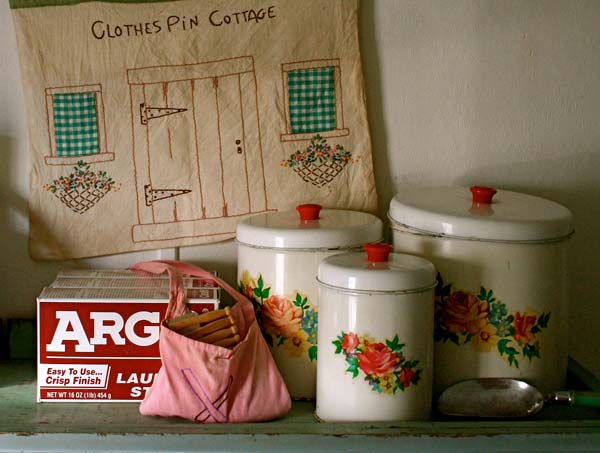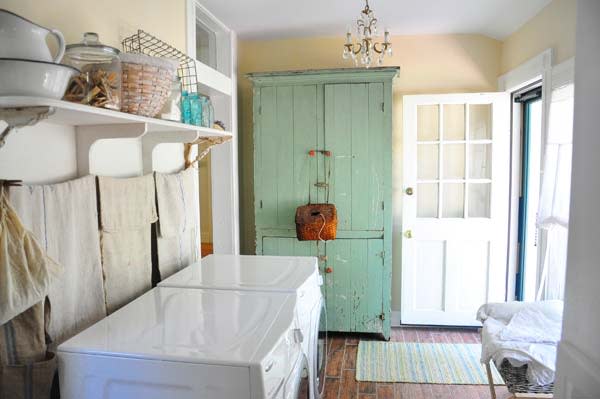
This laundry room flanks the kitchen of a restored 1865 Missouri farmhouse. Plumbing is cleverly hidden behind a curtain of cotton cording and old grain sacks. (Photo: Carol Spinski/raisedincotton.com)
My childhood memories of the laundry room recall the dank basement of our postwar suburban Foursquare in Ohio, and also the creepy stone foundation in the cellar of my grandparents’ New England farm. It seemed to me my mother was brave to venture into the catacombs, unafraid of those dark, cobwebbed corners. She would emerge victorious, with fresh, folded laundry heaped into a rattan basket. The contradiction—clean clothes from a dim cellar—was not lost on me. Neither have I taken for granted the multi-tasking allowed by modern laundry practices. (I have a load in the wash right now as I write.)
Before my mother’s day, laundry had been an all-encompassing task. But “electric appliances put more pressure on women who had relied on domestic help or services to accomplish these tasks themselves,” writes Jane Brox in Brilliant: The Evolution of Artificial Light (Houghton Mifflin Harcourt, 2010). “And although the labor of washing had disappeared, so had the community of it. Women who’d previously washed and hung their clothes in the back yard could gossip with hired help or neighbors . . . Electric washers and dryers confined them, often alone, to the house.”
Today laundry remains a solitary affair, but, just like the kitchen, the laundry room has been brought into the light of day. Ideally, it is easily accessible, a room of its own or tucked into a larger mudroom near the kitchen. It is highly functional, and may be part of the family space. Second-floor laundries, so popular during the McMansion era, sometimes may be practical, but in my opinion they are remote and lonely places.
Victorian households of means put their laundry rooms on the first floor, or in the cellar if a row house, but always the room was part of the service labyrinth of the home. In here would be a boiler to heat water, tubs and a large sink, an iron (made of iron), and indoor drying racks in heat-fed closets. Laundresses usually came to the household—Monday was traditionally wash day—and rarely lived in. In house museums (and the occasional old house), we can find preserved elements of this domestic past.
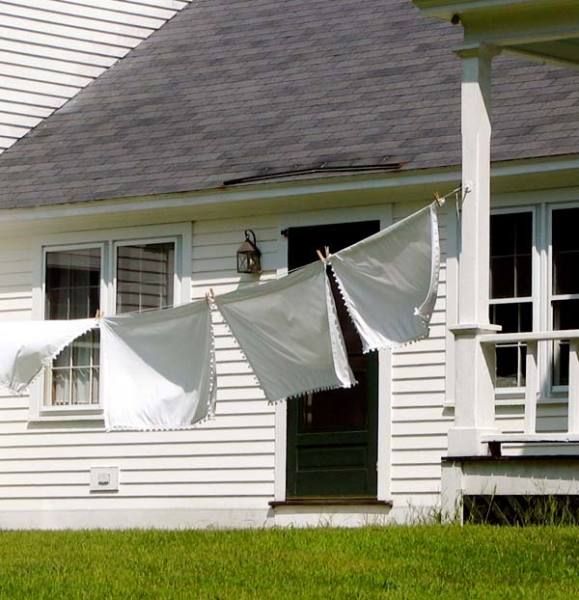
Whites soaking up the sun.
Catherine S. Pond
How does the 21st-century owner reconcile a historic house with modern laundry appliances and assumptions? The laundry room might remain in the basement, or be installed in a former pantry or utility room, or in an enclosed service porch. Often the laundry room is included, along with kitchen and bathroom, in a compatible addition. The essentials are the same as they were a hundred years ago: hot and cold water supply, a sink, a washing machine, and a way to dry clothes mechanically or in the air. Good lighting, hampers or bins, accessible shelves, and a cupboard or two complete the room. Space for ironing right out of the dryer is a bonus.
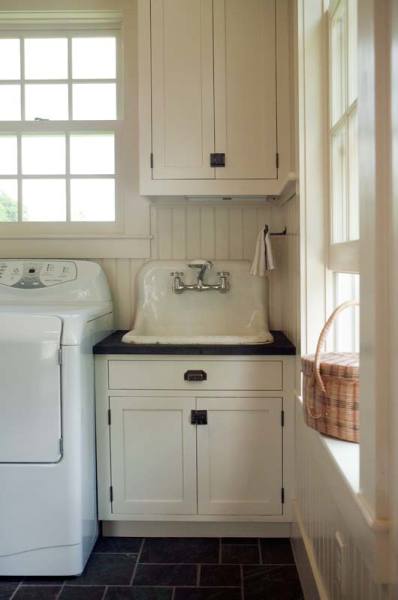
One end of a Vermont mudroom has a convenient laundry with an old sink built into the ivory-painted cabinets.
Eric Roth
When the laundry area is part of the kitchen (or otherwise obvious), appliances maybe concealed in cabinets or behind a folding or sliding door, or hidden behind a curtain. In designing a space devoted to the task, owners of old houses often incorporate nostalgic (and practical) elements such as a soapstone utility sink and drying racks, with detergent stored in vintage tins or bottles. In any case, the laundry room is necessarily a practical blend of old and new, and—since it is unlikely a laundress will be coming in to help—a space that helps you enjoy the task.



